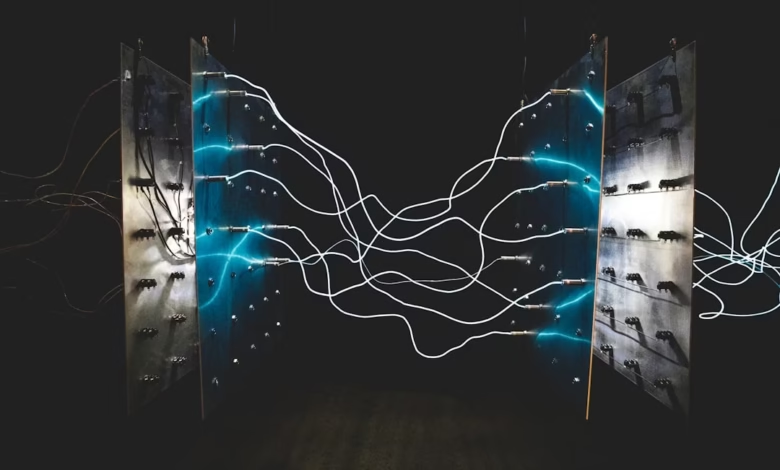Harnessing the Power of Distributed Energy: How Rooftop Solar and Wind Energy are Shaping the Future of Renewable Energy Markets

In recent years, the landscape of energy generation has undergone a significant transformation, driven by the emergence of distributed energy systems. As concerns over climate change and energy security intensify, renewable energy sources, such as rooftop solar panels and wind energy, are becoming increasingly popular, reshaping energy markets worldwide. This shift towards decentralized energy generation not only empowers consumers to take control of their energy consumption but also plays a crucial role in the global energy transition. By balancing renewable energy with traditional fossil fuels and nuclear energy, innovative strategies are being developed to enhance energy efficiency and mitigate carbon emissions. Furthermore, advancements in energy storage and smart grid technology are paving the way for a more resilient and sustainable energy future. In this article, we will explore the rise of distributed energy, the strategies driving the energy transition, and the innovations set to revolutionize energy economics and security in our interconnected world.
- 1. The Rise of Distributed Energy: How Rooftop Solar and Wind Energy are Transforming Energy Markets
- 2. Energy Transition Strategies: Balancing Renewable Energy with Fossil Fuels and Nuclear Energy
- 3. Innovations in Energy Storage and Smart Grids: Enhancing Energy Efficiency and Security in a Decentralized World
1. The Rise of Distributed Energy: How Rooftop Solar and Wind Energy are Transforming Energy Markets
The energy landscape is undergoing a significant transformation, driven by the rise of distributed energy generation. Rooftop solar panels and wind energy are at the forefront of this shift, reshaping energy markets and pushing towards a more sustainable future. As global energy trends continue to evolve, the adoption of renewable energy sources is increasingly seen as an essential component of energy policy aimed at reducing reliance on fossil fuels and nuclear energy.
Distributed energy systems, such as rooftop solar and small-scale wind turbines, empower consumers to generate their own electricity, enhancing energy efficiency and promoting energy security. This decentralization of energy generation not only reduces the need for extensive energy transportation networks but also minimizes transmission losses, making energy systems more resilient. With the integration of smart grids, these technologies enable real-time monitoring and management of energy usage, optimizing the performance of renewable energy sources.
Moreover, the growth of distributed energy aligns with global initiatives to combat climate change. As nations strive to meet their carbon reduction targets, investments in energy storage technologies become critical. Energy storage solutions complement renewable energy sources like solar power and wind energy by ensuring a consistent energy supply, even when the sun isn't shining or the wind isn't blowing. This adaptability is essential as we transition away from traditional thermal energy sources and explore innovations in hydrogen energy and bioenergy.
The shift towards distributed energy also stimulates energy economics by creating new markets for energy exports and imports. Countries rich in renewable resources can capitalize on energy investment opportunities, exporting green energy to regions dependent on fossil fuels. This transition not only enhances energy security but also fosters a more diversified energy portfolio globally.
As electric vehicles rise in popularity, the demand for renewable energy sources will continue to increase. The convergence of renewable energy with advancements in carbon capture technology and energy R&D presents unique opportunities for further reducing greenhouse gas emissions while ensuring a reliable energy supply. In essence, the rise of distributed energy is not just a trend; it represents a pivotal movement towards a sustainable energy future that prioritizes renewable energy and addresses the pressing challenges posed by climate change.
2. Energy Transition Strategies: Balancing Renewable Energy with Fossil Fuels and Nuclear Energy
As the world moves towards a more sustainable future, energy transition strategies are crucial for balancing the integration of renewable energy sources with existing fossil fuels and nuclear energy. This multifaceted approach is essential for optimizing energy efficiency and ensuring energy security while addressing climate change.
Renewable energy technologies, such as solar power, wind energy, and hydropower, play a pivotal role in the transition. However, the intermittent nature of these resources necessitates robust energy storage solutions to provide a reliable power supply. Innovations in energy storage, including battery technologies and thermal energy systems, are vital for managing fluctuations in energy production and consumption.
Fossil fuels currently dominate global energy markets, but their role must evolve. Strategies like carbon capture and storage (CCS) can mitigate the environmental impact of fossil fuel utilization, allowing for a gradual shift towards greener alternatives without abrupt disruptions. By investing in energy R&D, we can improve the efficiency of fossil fuel use and enhance carbon sequestration methods.
Nuclear energy, with its low carbon emissions, is another significant component of this energy transition. While concerns about safety and waste disposal remain, advancements in nuclear technology, such as small modular reactors (SMRs), offer potential solutions to these challenges. Integrating nuclear energy with renewable sources can help stabilize energy grids and provide a consistent power supply, particularly as we scale up green energy initiatives.
Smart grids and energy innovations are essential for facilitating this transition. They enable better management of energy flows and enhance the integration of distributed energy resources, such as rooftop solar panels and offshore energy facilities. By leveraging smart grids, we can optimize energy transportation and consumption, making the system more resilient and responsive to demand.
Moreover, energy policy plays a critical role in shaping the energy transition landscape. Governments must create supportive frameworks that promote renewable energy investments, incentivize energy efficiency, and facilitate the development of electric vehicles. By fostering an environment conducive to energy innovations, we can accelerate the adoption of clean technologies and reduce reliance on fossil fuels.
In summary, balancing renewable energy with fossil fuels and nuclear energy requires a comprehensive strategy that incorporates energy storage, innovative technologies, and supportive energy policies. By embracing this integrated approach, we can effectively navigate the complexities of the energy transition while securing a sustainable energy future.
3. Innovations in Energy Storage and Smart Grids: Enhancing Energy Efficiency and Security in a Decentralized World
As the world shifts towards distributed energy systems, innovations in energy storage and smart grids play a crucial role in enhancing energy efficiency and security. The transition from traditional fossil fuels and nuclear energy to renewable energy sources like solar power, wind energy, and hydropower necessitates advanced technologies that can effectively manage this diverse energy landscape.
Energy storage solutions, such as batteries and thermal energy storage, are vital in balancing supply and demand. By storing excess energy generated from renewable sources during peak production times, these systems ensure a steady energy supply even when generation drops. For instance, advanced lithium-ion batteries are increasingly being deployed to store energy from solar panels and wind turbines, allowing for greater integration of distributed energy systems into the grid. Moreover, innovations in hydrogen energy and bioenergy provide additional storage options, contributing to a more resilient energy infrastructure.
Smart grids are another significant innovation, enabling a more efficient and secure energy transportation system. These digital networks facilitate real-time communication between energy producers and consumers, optimizing energy distribution and minimizing waste. By incorporating data analytics and automation, smart grids can enhance energy efficiency and support the integration of electric vehicles, which are becoming increasingly prevalent in our energy markets. This intelligent management of energy resources not only improves energy security but also aligns with global energy trends aimed at reducing greenhouse gas emissions and combating climate change.
Furthermore, energy policy plays a critical role in supporting these innovations. Governments need to invest in energy R&D to foster new technologies that enhance energy storage and smart grid capabilities. This investment is essential for driving the energy transition and ensuring that countries can meet their energy demands sustainably. As nations navigate the complexities of energy imports and exports, a focus on green energy solutions will be pivotal in shaping future energy economics.
In summary, the advancements in energy storage and smart grids are integral components of the decentralized energy landscape. By embracing these innovations, we can enhance energy efficiency, bolster energy security, and ultimately support a transition towards a more sustainable and resilient energy future.
In conclusion, the shift towards distributed energy systems, particularly through the adoption of rooftop solar panels and wind energy, is reshaping the landscape of global energy markets. As we move forward in our energy transition, it is crucial to balance renewable energy sources with fossil fuels and nuclear energy to ensure a reliable and secure energy supply. Innovations in energy storage and the development of smart grids play a pivotal role in enhancing energy efficiency and security, enabling us to harness the full potential of green energy.
Moreover, the integration of diverse energy sources, including hydropower, bioenergy, and thermal energy, alongside emerging technologies such as hydrogen energy and carbon capture, will be vital in addressing climate change challenges. Energy policy must adapt to reflect these global energy trends, fostering investment in energy R&D and infrastructure that supports distributed energy solutions.
As we explore the future of energy transportation and address the dynamics of energy exports and imports, it is essential to prioritize energy innovations that align with sustainable practices. Embracing this decentralized approach not only enhances energy security but also drives economic growth in the evolving energy landscape. By leveraging these advancements, we can create a resilient energy system that meets the demands of a rapidly changing world while contributing to a sustainable and carbon-neutral future.





